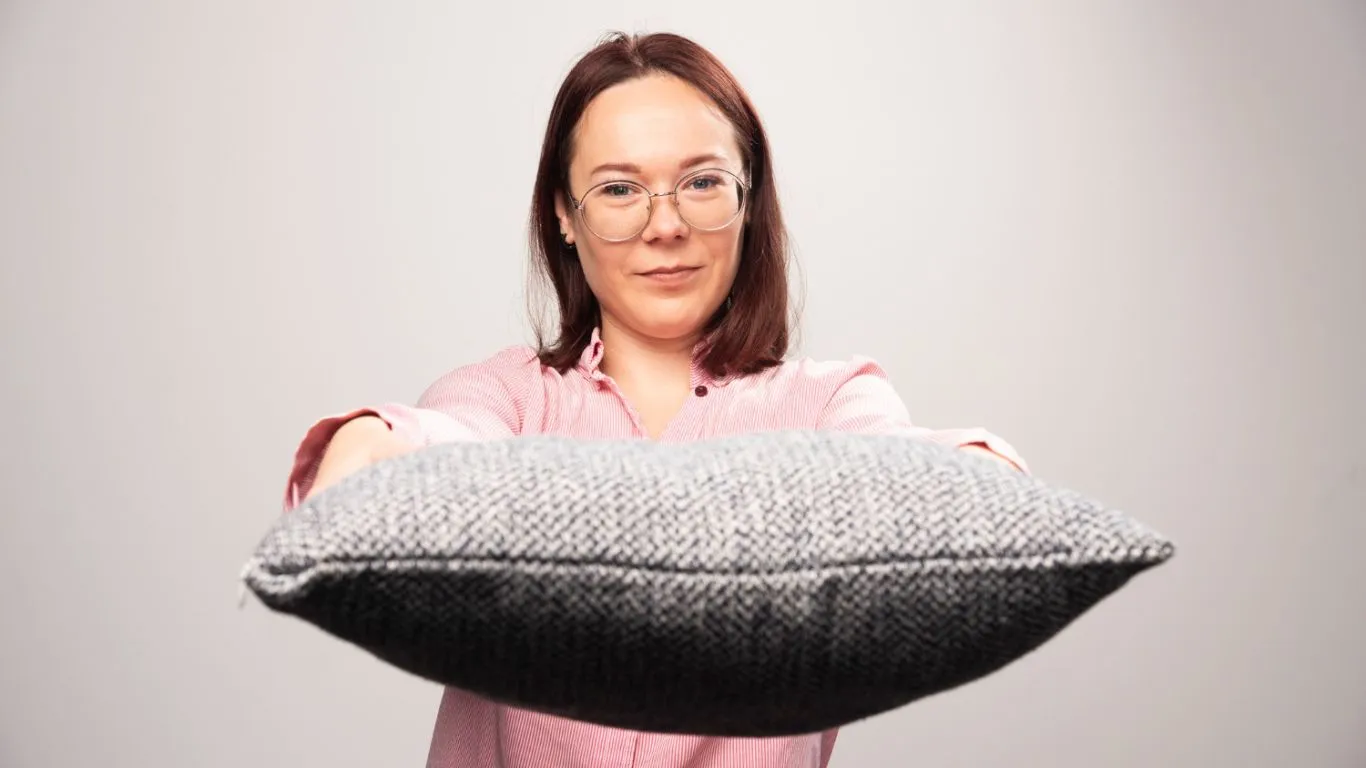What is a Pillow? Pillow is a fundamental sleep accessory. It’s designed to support the head and neck. This ensures comfort and proper spinal alignment during rest. Pillows are available in diverse types. These include traditional memory foam, feather, and cervical pillows. Each serves specific preferences and needs. Choosing the right pillow involves considering factors like sleeping position and material preference. Regular maintenance is crucial for hygiene and durability. This includes washing pillowcases, fluffing, and timely replacement. With the right pillow, individuals can enhance their sleep quality. They can also reduce discomfort and enjoy restful nights. This improves their well-being.
Pillow History
[Collected by wikipedia pillow]
“The exact origin is unknown. The use of pillows evolved in animals well into prehistory. The earliest examples include reptiles and mammals resting their heads on themselves and one another. They did this to support the head and neck. Animals, including humans, evolved the use of inanimate objects in their nests. They used wood and stone as pillows. Since domestication, many animals have also learned to use human-made pillows and cushions. They also rest on members of their own and other species for this purpose.”
Types of Pillows
Traditional Pillows: These are your standard rectangular pillows, filled with materials like cotton, polyester, or a blend of both.
Memory Foam Pillows: Known for their ability to contour to the shape of your head and neck, memory foam pillows offer excellent support and comfort.
Feather Pillows: Filled with the outer feathers of ducks or geese, these pillows provide a soft and luxurious feel.
Latex Pillows: Made from natural or synthetic latex, these pillows are hypoallergenic and resistant to dust mites and other allergens.
Cervical Pillows: Designed to support the natural curve of the neck, these pillows are often recommended for individuals with neck pain or stiffness.
Choosing the Right Pillow
- Sleeping Position: Your preferred sleeping position influences the type of pillow you need. Side sleepers may benefit from firmer pillows, while back and stomach sleepers may prefer medium to soft options.
- Material Preference: Different pillow materials offer varying degrees of support and comfort. Memory foam is ideal for those who need extra support, while feather pillows provide a softer feel.
- Allergies: If you suffer from allergies, opt for hypoallergenic pillows to minimize the risk of irritation during sleep.

Maintaining Your Pillow
Taking care of your pillow is essential for both hygiene and longevity. Follow these tips:
- Regular Cleaning: Pillowcases should be washed weekly, and pillows themselves, depending on the material, should be cleaned every few months.
- Fluffing: Give your pillow a good fluff regularly to maintain its shape and support.
- Replacement: Pillows should be replaced every 1-2 years, or when they show signs of wear and tear.
How to pillow use
To use a pillow for optimal comfort and support, start by selecting the right pillow. Base your choice on your preferred sleep position and personal preferences. If you sleep on your back, choose a medium-firm pillow to support the natural curvature of your spine. Side sleepers enjoy a firmer pillow. It helps maintain proper alignment between the neck and shoulders.
Stomach sleepers should use a softer, flatter pillow to avoid straining the neck. Additionally, ensure that your pillowcase is clean and made from breathable materials. Replace pillows to maintain hygiene and structural integrity. Experiment with different pillow placements to find the most comfortable and supportive position. Consider the pillow’s thickness and loft. Thoughtful pillow selection and usage contribute to restful, rejuvenating sleep.
In conclusion, the humble pillow plays a pivotal role in our daily lives. It offers more than just a soft place to rest our heads. Pillows cater to individual sleep comfort needs. They offer traditional, memory foam, and cervical options, each tailored to different preferences. Choosing the right pillow involves understanding personal preferences, sleeping positions, and material considerations. We ensure sustained support and hygiene by maintaining pillows. We also replace them on time. Investing in the perfect pillow is an investment in restful nights. It promotes well-being and invites the sweet embrace of rejuvenating sleep.
FAQ
Q: What is the primary purpose of a pillow?
A: The primary purpose of a pillow is to provide support for the head and neck during sleep, ensuring comfort and maintaining proper spinal alignment.
Q: How do I choose the right pillow for my sleeping position?
A: Consider your sleeping position – side, back, or stomach. Side sleepers may prefer firmer pillows, while back and stomach sleepers may opt for medium to soft options.
Q: Are memory foam pillows suitable for all sleep positions?
A: Yes, memory foam pillows are versatile and can offer excellent support for various sleep positions by contouring to the shape of your head and neck.
Q: How often should I replace my pillow?
A: Pillows should be replaced every 1-2 years to ensure optimal support and hygiene. Signs of wear and tear are indicators that it’s time for a replacement.
Q: Can pillows help alleviate neck pain?
A: Yes, the right pillow, especially cervical pillows designed to support the natural curve of the neck, can help alleviate neck pain by promoting proper spinal alignment during sleep.


6 thoughts on “What is a Pillow?”